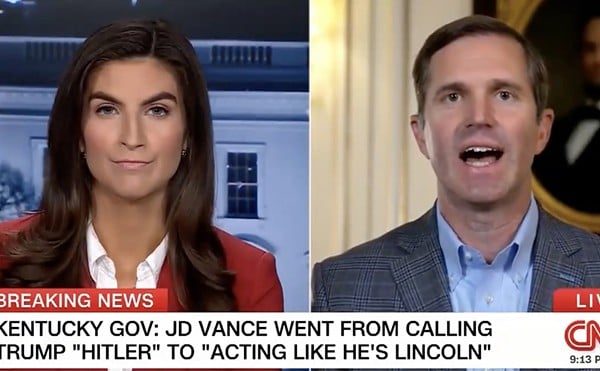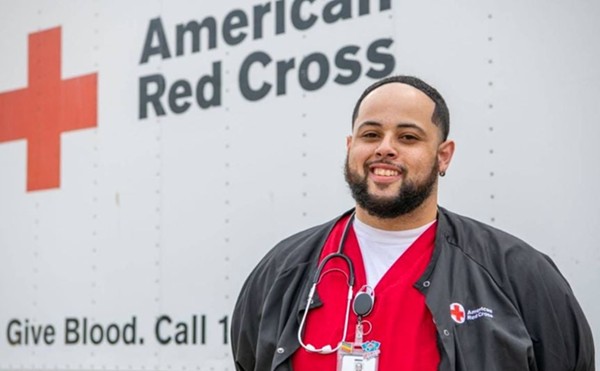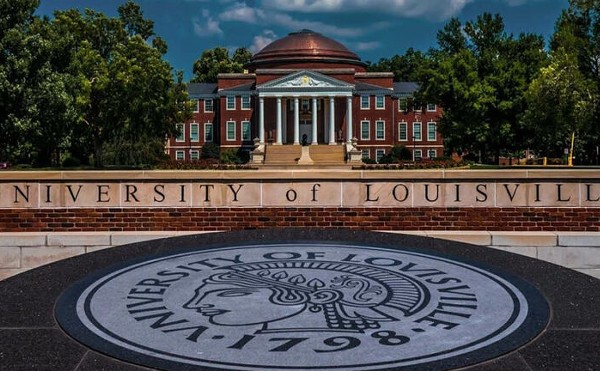So you think Louisville is among the nation’s leading arts communities? That depends on factors considered. The Urban Institute, a non-profit research organization, gathered statistics based on census data about the number of artists, artist jobs, nonprofit arts contributions and other data, and in seven categories ranked the top 50 cities.
While the Louisville area ranks 43rd in population (according to the metropolitan statistical areas as defined by the U.S. Census Bureau), we rank higher in all of the study’s categories: arts establishments, 28; employment in the arts, 28; arts nonprofits, 32; nonprofit arts contributions, 16; nonprofit arts expenses, 18; artist jobs, 27; and nonprofit community celebrations, festivals, fairs and parades, 19. (Details at www.urban.org.)
“We’re way ahead of where we would expect to be,” says Tom Noland, Humana’s VP of corporate communications and president of Louisville’s Partnership for Creative Economies, a group of arts advocates seeking new and secure funding avenues for arts.
Carolyn Gatz, director of the Greater Louisville Project, noted a trend in the data that considers non-traditional arts and community efforts and not just professional organizations. The project is working with organizations throughout the city on strategies to boost Louisville’s economy. “They’re defining art and cultural vitality by community-driven events,” she says. “This is the way the community needs to think about the arts.”
Gatz is on target, says Paul Coomes, a U of L economist who has worked with the partnership to help determine the arts’ regional economic impact. Coomes says the city’s standing in the study comes from having a solid infrastructure for traditional arts. (Louisville is one of only 13 U.S. cities to sustain a major professional art museum, ballet, opera, orchestra and theater.) Coomes has found most non-profit contributions and expenditures occur under the Kentucky Derby Festival and Louisville Fund for the Arts and their member organizations. In 2006, the Festival had an annual budget of about $5 million, and this year the Fund raised nearly $8 million and allotted more than 50 percent of that to Actors Theatre of Louisville ($1.25 million), Kentucky Opera ($582,000), Louisville Orchestra ($2.2 million) and Louisville Ballet ($818,000).
To truly compete with other cities, Coomes says, Louisville must give significant support to arts from traditional to grassroots, to draw significant human and financial capital to the region. —Elizabeth Kramer
Why you’re always broke
Hey, YOU! Here’s sobering news to help un-swell your head from being named Time magazine’s Person of the Year: Nonprofit family-advocacy group Families USA conducted a state-by-state study showing why you’re so broke. It’s not that RazrBerriPodCorderTooth or your porn addiction or even the $2.50 gas coming out of the newly democratic Middle East. It’s health insurance!
The study (at www.familiesusa.org) shows what everyone with a poorly perforated paystub knows: Insurance premiums are rising much faster than earnings. From 2000 to 2006 (what future historians will refer to as “The Rove Years”), premiums rose almost four times faster than earnings. On average, family healthcare premiums rose 68.3 percent, while median earnings rose only 17.6 percent. The average Kentucky family-plan annual premium rose from $7,096 to $11,944. And because employers pay an average of about nine grand of that price, the dramatic increase is putting the serious hurt on businesses, too.
It doesn’t take a rocket surgeon to figure out that health insurance premiums are rising faster than income. It takes a Families USA researcher. Between 2000-2006, median earnings of Kentucky’s workers increased from $21,512 to $25,306. So let’s do the math. Let’s see, $25 grand minus … carry the one … and what’s left over is approximately, “Oh, poop.”
At least with all this pricey insurance, we can count on excellent coverage when we’re sick, right? Wrong. The study cites a trend toward “thinner coverage,” a corporate euphemism for higher deductibles, more co-payments and greater cost-sharing on hospitalization and prescription drugs than families paid in the ’90s, when … ahem … cough, cough … some good ideas about health-care reform were bouncing around the White House before getting squashed by the health-insurance lobby.
In fact, the study showed that more than one-quarter of INSURED Americans report problems with medical bills and paying off medical debt. And more than a half-million working-age Kentuckians have no health insurance.
The study concludes, “If this trend continues, more and more families will inevitably join the ranks of the uninsured and underinsured, and Kentuckians will face diminishing economic and health security. This crisis will only worsen until there is national leadership in Washington, D.C., that takes decisive and meaningful action to make health care truly affordable and accessible to all.” Courageously, there was no closing mention of simian primates flying out of any rectums. The co-pay on getting that fixed is brutal. —Jim Welp
It’s not easy being green
There are certain advantages Louisville has when it comes to energy expenditure, most notably that our state’s is among the cheapest in the country (mostly because of unbridled coal production). Being humans, cheapness primes the pump for increased consumption and forgetting to actually think about how much we’re chugging. The Non-Denominational Winter Solstice Holiday Celebration Season provides an ideal opportunity to consider such lacks of consideration, what with all the bright, pretty lights paying tribute to God/Jesus/The Mall — like, wonder how many lumps of coal arrived early in Metro Government’s stocking to fire up the “Pride of America” tree for a month?
But Metro Government’s not content to sit around Lighting Up Louisville all day. At least not without passing the memos to do so on recycled paper.
It was 18 months ago that Mayor Abramson entered into an agreement (proffered by Seattle mayor Greg Nickels) to essentially abide by the Kyoto Protocol, the 141-country agreement to begin reversing the pollution behind global warming. Metro Government then established — with U of L and Jefferson County Public Schools — the Partnership for a Green City, a think-tank to bring Louisville into compliance with the Mayors Climate Protection Agreement that Hizzoner signed.
Last Wednesday was the first meeting of the climate change committee, an arm of the Partnership charged with finding ways for Louisville to get right with Mother Nature before 70-degree winter weeks become the norm. Mayoral spokesman Chad Carlton said Metro Government needs to straighten its own house before community-wide initiatives begin: More recycled paper now makes the rounds on Sixth and Jefferson, sensors have been installed to turn on and off lights, and the city has purchased hybrid cars to experiment with how to add them to official fleets.
The group will mix pie-in-the-sky ideas — green buildings, expanded mass transit — with more realistic and economically sensitive ones, like buying energy-saver light bulbs. It’s good to see progress here, glacial though it may be. —Stephen George
City Strobe: Got cultural vitality?
[
{
"name": "GPT - Rectangle - Inline - Content",
"component": "15818221",
"insertPoint": "5th",
"startingPoint": "3",
"requiredCountToDisplay": "3",
"maxInsertions": 100
}
]





